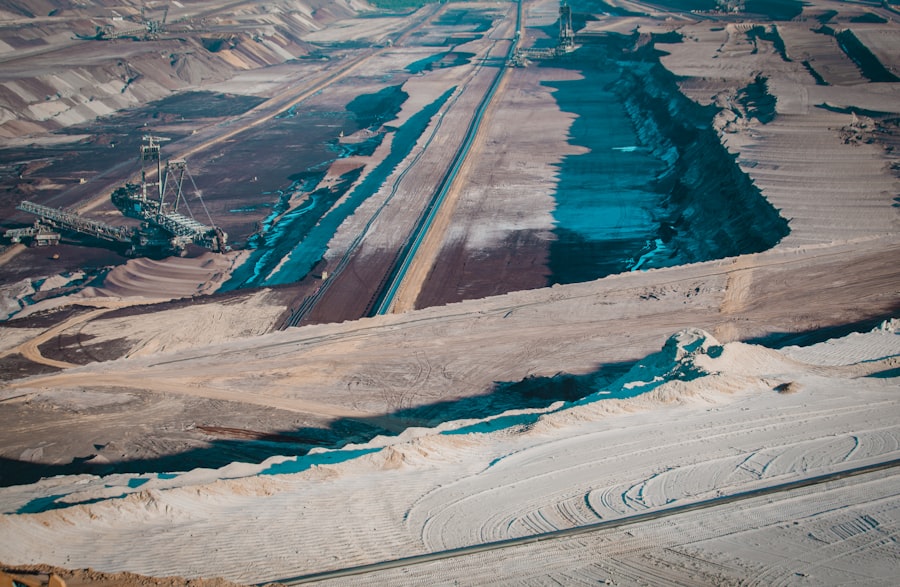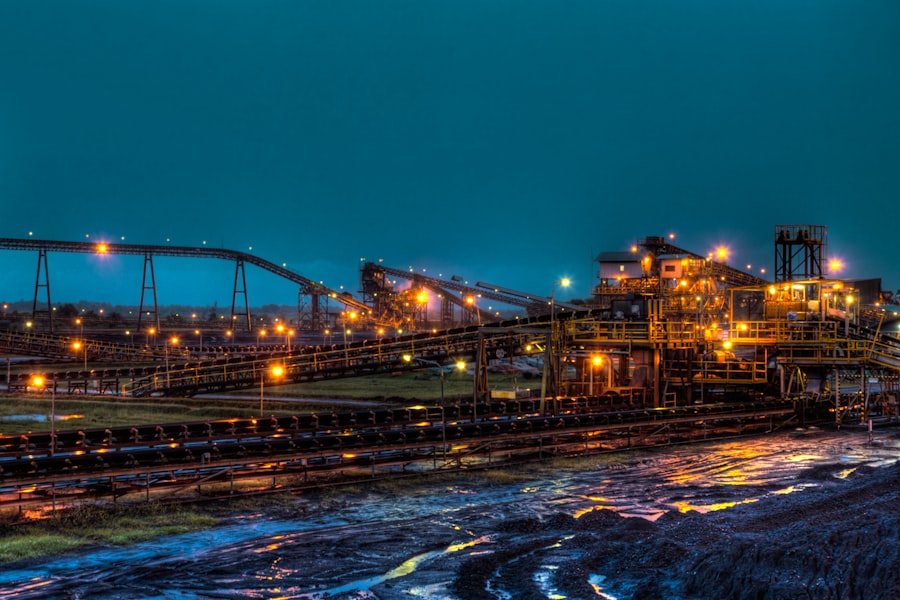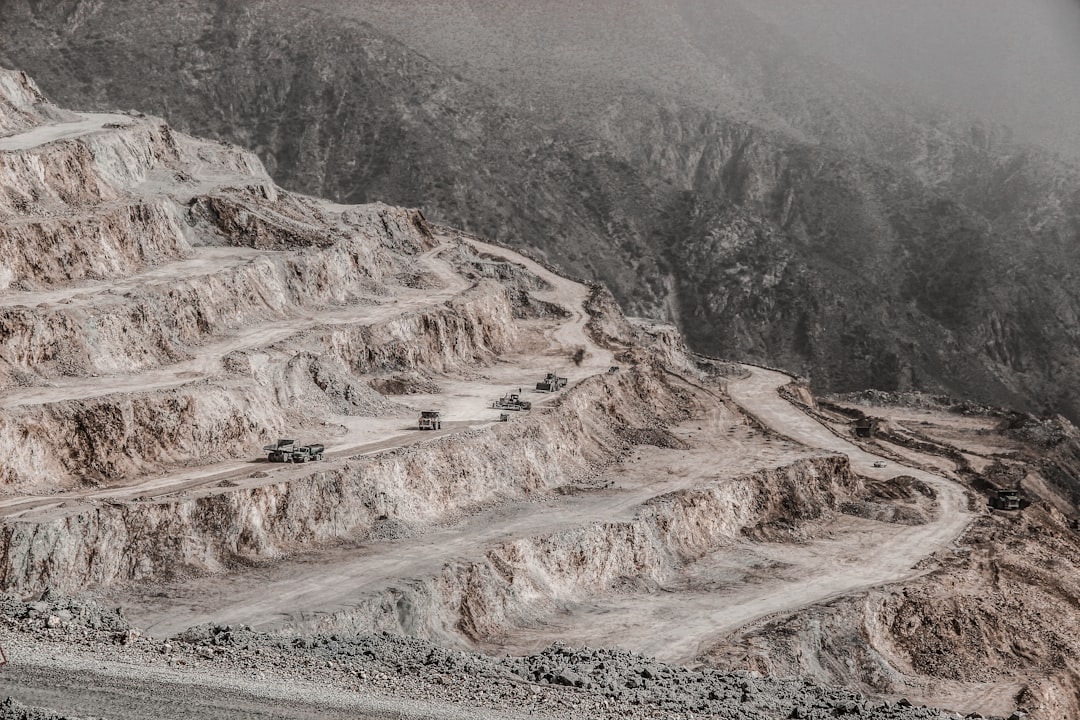When you think of Nevada, images of vast deserts and vibrant casinos may come to mind. However, beneath the surface lies a rich tapestry woven from the threads of its mining industry. This sector is not just a significant part of the state’s economy; it is a cornerstone of its identity.
Mining in Nevada has shaped the landscape, influenced its culture, and provided livelihoods for countless individuals. As you delve deeper into this topic, you will discover how mining has evolved over the years and continues to play a pivotal role in the state’s development. The mining industry in Nevada is renowned for its gold production, but it encompasses a wide array of minerals and resources.
From silver to lithium, the state is a treasure trove of valuable materials that are essential for various industries worldwide. Understanding the intricacies of this industry will give you insight into how it has transformed Nevada into a leader in mineral extraction and production. As you explore the history, economic impact, and future prospects of mining in Nevada, you will appreciate its significance beyond mere numbers and statistics.
Key Takeaways
- Nevada’s mining industry has a long history and plays a significant role in the state’s economy.
- Mining has had both positive and negative impacts on Nevada’s economy, environment, and society.
- The process of mining in Nevada involves various stages, including exploration, extraction, and processing of minerals.
- Nevada is rich in a variety of minerals, including gold, silver, copper, and lithium.
- The future of mining in Nevada will likely be influenced by technological advancements and environmental regulations.
The History of Mining in Nevada
The Birth of a Mining Boom
The discovery of silver at Comstock Lode in 1859 marked a turning point, igniting a mining boom that attracted thousands of hopeful miners. This influx of people not only transformed the economy but also laid the groundwork for towns and communities that still exist today.
Evolution of Mining in Nevada
Over the decades, mining in Nevada has undergone significant changes. The initial focus on silver gradually shifted to gold, particularly during the late 19th and early 20th centuries. The Gold Rush brought with it technological advancements and increased investment, leading to more efficient extraction methods.
A Legacy of Resilience and Adaptability
As you reflect on this period, consider how the dreams and aspirations of those early miners shaped the very fabric of Nevada. The resilience and adaptability of the industry have been key to its longevity and success.
The Economic Impact of Nevada’s Mining Industry

The economic impact of mining in Nevada is profound and multifaceted. As one of the largest producers of gold in the United States, the industry contributes significantly to the state’s GDP. You might be surprised to learn that mining accounts for a substantial portion of Nevada’s total exports, making it a vital player in both local and national economies.
The revenue generated from mining activities supports not only the companies involved but also local businesses and services that rely on this economic engine. Moreover, mining creates thousands of jobs across various sectors, from skilled laborers to engineers and environmental specialists. These jobs provide stable incomes for families and contribute to community development.
As you consider the broader implications, think about how mining supports education, healthcare, and infrastructure in Nevada. The ripple effect of this industry extends far beyond the mines themselves, fostering growth and stability in many aspects of life within the state.
Environmental and Social Impacts of Mining in Nevada
| Environmental and Social Impacts of Mining in Nevada |
|---|
| 1. Water Pollution |
| 2. Air Pollution |
| 3. Soil Degradation |
| 4. Habitat Destruction |
| 5. Noise Pollution |
| 6. Health and Safety Risks for Workers |
| 7. Displacement of Communities |
| 8. Economic Dependence on Mining Industry |
While the economic benefits of mining are significant, it is essential to acknowledge the environmental and social impacts associated with this industry. Mining operations can lead to habitat destruction, water pollution, and soil degradation. As you reflect on these consequences, consider how they affect not only wildlife but also local communities that depend on natural resources for their livelihoods.
The balance between economic gain and environmental stewardship is a critical conversation that continues to evolve. Socially, mining has both united and divided communities in Nevada. On one hand, it has brought people together through shared employment opportunities and economic prosperity.
On the other hand, it has sparked debates over land use, resource management, and community health. As you explore these dynamics, think about how stakeholders—including miners, environmentalists, and local residents—navigate these complex issues. The ongoing dialogue surrounding mining practices highlights the need for sustainable approaches that prioritize both economic growth and environmental protection.
The Process of Mining in Nevada
Understanding the process of mining in Nevada provides insight into how raw materials are extracted from the earth. It begins with exploration, where geologists use various techniques to identify potential mineral deposits. Once a viable site is located, companies conduct feasibility studies to assess the economic viability of extraction.
This stage is crucial as it determines whether a project will move forward or be abandoned. Once a project is deemed feasible, the next step involves obtaining permits and preparing the site for extraction. This includes constructing access roads, establishing infrastructure, and implementing safety measures for workers.
As you consider these steps, recognize that modern mining operations prioritize efficiency and safety while minimizing environmental impact. Advanced technologies such as automated machinery and data analytics are increasingly being integrated into mining processes, enhancing productivity while addressing environmental concerns.
The Types of Minerals Mined in Nevada

Emerging Markets and Sustainable Energy
Lithium has gained particular attention in recent years due to its importance in battery production for electric vehicles and renewable energy storage systems. As you explore this emerging market, consider how Nevada’s lithium resources position it as a key player in the global transition toward sustainable energy solutions.
A Diverse Range of Minerals
The diversity of minerals mined in Nevada not only contributes to economic stability but also reflects the evolving demands of various industries worldwide.
A Key Player in the Global Economy
Nevada’s mineral wealth has far-reaching implications, positioning the state as a significant contributor to the global economy.
The Future of Mining in Nevada
Looking ahead, the future of mining in Nevada appears promising yet challenging. As global demand for minerals continues to rise—especially for those critical to technology and renewable energy—Nevada is well-positioned to meet these needs. However, this growth comes with responsibilities.
You will find that balancing economic development with environmental sustainability will be paramount as mining companies adapt to changing regulations and public expectations. Innovation will play a crucial role in shaping the future of mining in Nevada. Companies are increasingly investing in research and development to improve extraction methods and reduce environmental footprints.
As you consider these advancements, think about how they can lead to more sustainable practices that benefit both the industry and local communities. The future of mining in Nevada will depend on collaboration among stakeholders to ensure that economic growth does not come at the expense of environmental health.
The Importance of Nevada’s Mining Industry
In conclusion, Nevada’s mining industry is more than just an economic powerhouse; it is an integral part of the state’s identity and heritage. From its historical roots during the Gold Rush to its current status as a leader in mineral production, mining has shaped Nevada’s landscape and culture in profound ways. As you reflect on its importance, consider how it continues to influence not only local economies but also global markets.
The challenges facing the industry are significant but not insurmountable. By embracing innovation and prioritizing sustainability, Nevada’s mining sector can continue to thrive while protecting its natural resources for future generations. Ultimately, understanding the complexities of this industry allows you to appreciate its role in shaping not just Nevada but also our collective future as we navigate an ever-changing world.
The largest mine in Nevada, the Cortez Gold Mine, has been a significant contributor to the state’s economy and mining industry. For more information on the impact of mining in Nevada, check out this article on Nevada Today’s blog. The article discusses the history of mining in the state and the current challenges and opportunities facing the industry. It provides valuable insights into the importance of mining to Nevada’s economy and the efforts being made to ensure sustainable mining practices.
FAQs
What is the largest mine in Nevada?
The largest mine in Nevada is the Goldstrike Mine, which is located in Eureka County. It is one of the largest gold mines in the world.
When was the Goldstrike Mine established?
The Goldstrike Mine was established in 1986 by the American Barrick Resources Corporation, which later became Barrick Gold Corporation.
What is the production capacity of the Goldstrike Mine?
The Goldstrike Mine has a production capacity of approximately 1.5 million ounces of gold per year.
How much gold has been produced from the Goldstrike Mine?
Since its establishment, the Goldstrike Mine has produced over 40 million ounces of gold.
What other minerals are mined at the Goldstrike Mine?
In addition to gold, the Goldstrike Mine also produces silver and copper as by-products of its gold mining operations.
How many employees work at the Goldstrike Mine?
The Goldstrike Mine employs approximately 1,400 people, making it a significant source of employment in the region.
What is the environmental impact of the Goldstrike Mine?
The Goldstrike Mine has implemented various environmental management practices to minimize its impact on the surrounding ecosystem, including water conservation and reclamation efforts.


